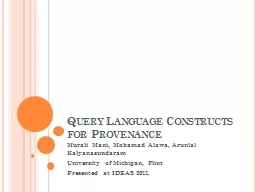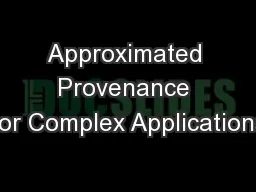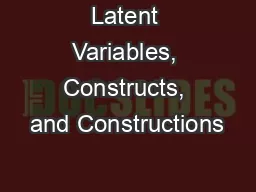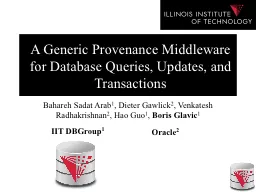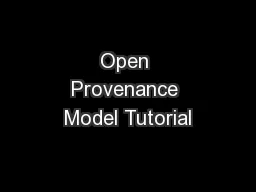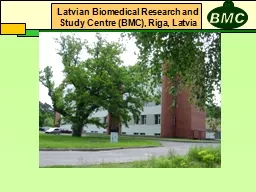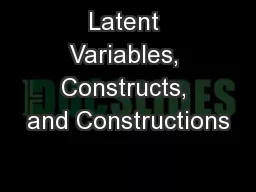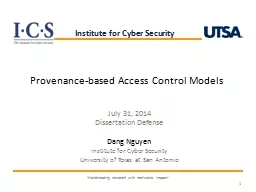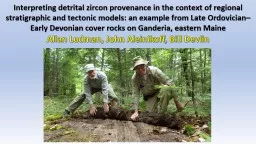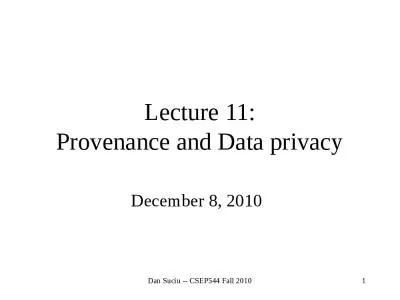PPT-Query Language Constructs for Provenance
Author : mitsue-stanley | Published Date : 2016-03-08
Murali Mani Mohamad Alawa Arunlal Kalyanasundaram University of Michigan Flint Presented at IDEAS 2011 Provenance Metadata Data about origins of data Applications
Presentation Embed Code
Download Presentation
Download Presentation The PPT/PDF document "Query Language Constructs for Provenance" is the property of its rightful owner. Permission is granted to download and print the materials on this website for personal, non-commercial use only, and to display it on your personal computer provided you do not modify the materials and that you retain all copyright notices contained in the materials. By downloading content from our website, you accept the terms of this agreement.
Query Language Constructs for Provenance: Transcript
Download Rules Of Document
"Query Language Constructs for Provenance"The content belongs to its owner. You may download and print it for personal use, without modification, and keep all copyright notices. By downloading, you agree to these terms.
Related Documents

